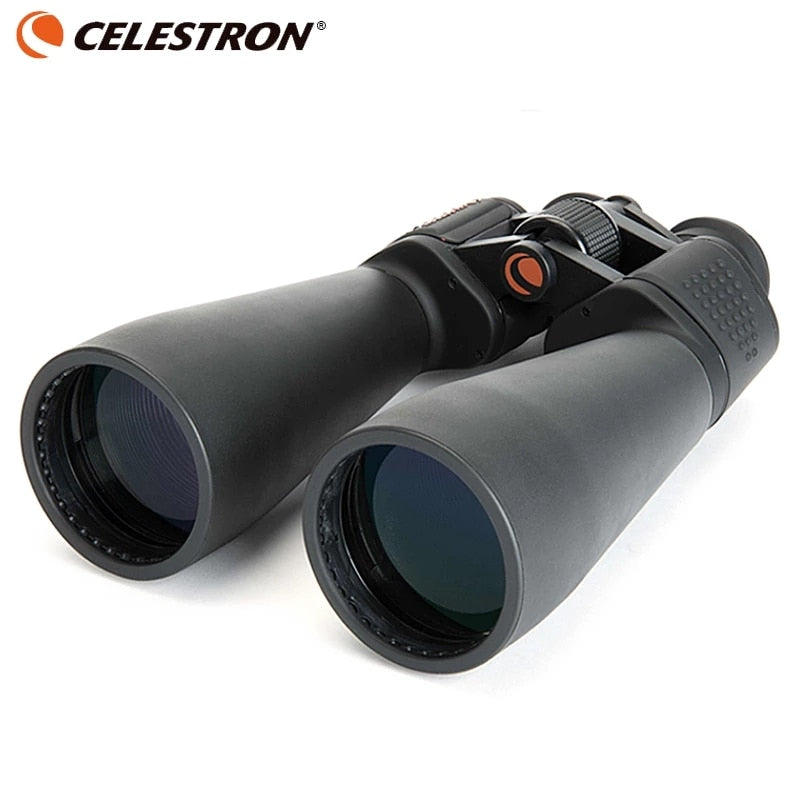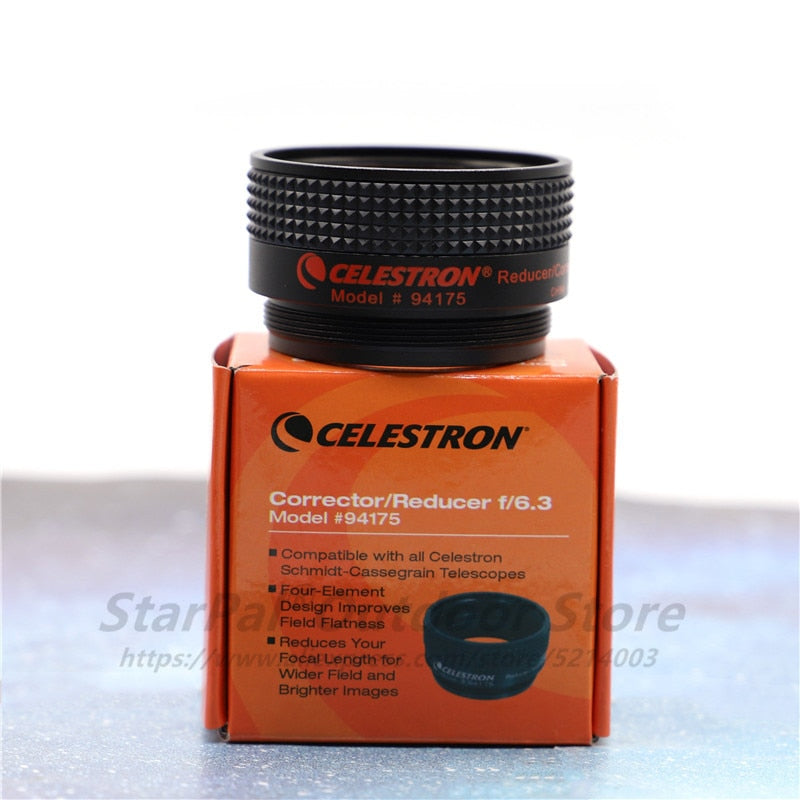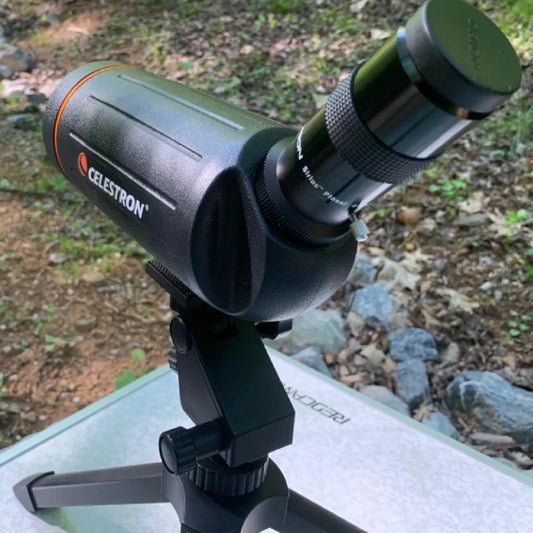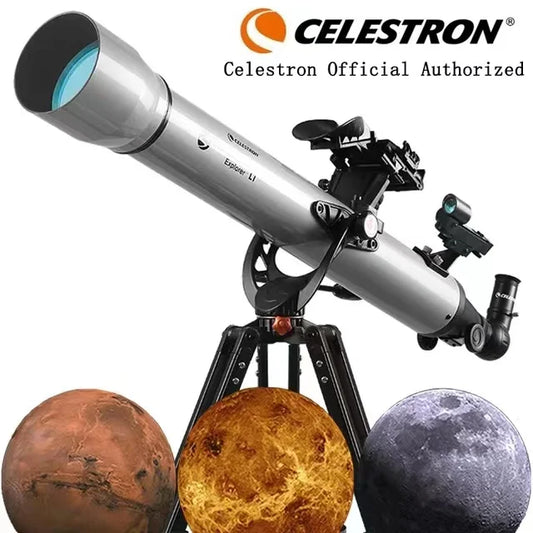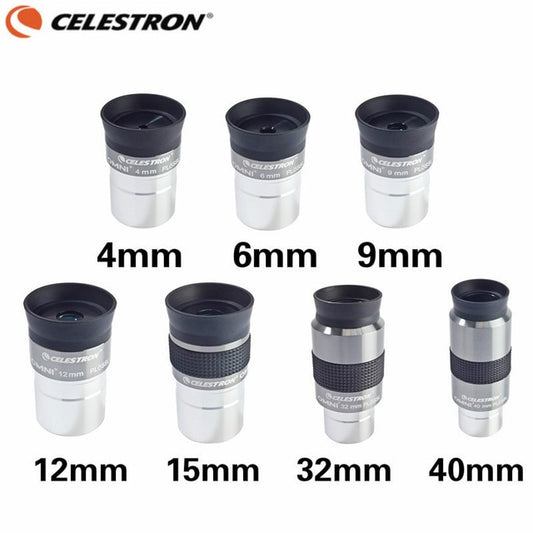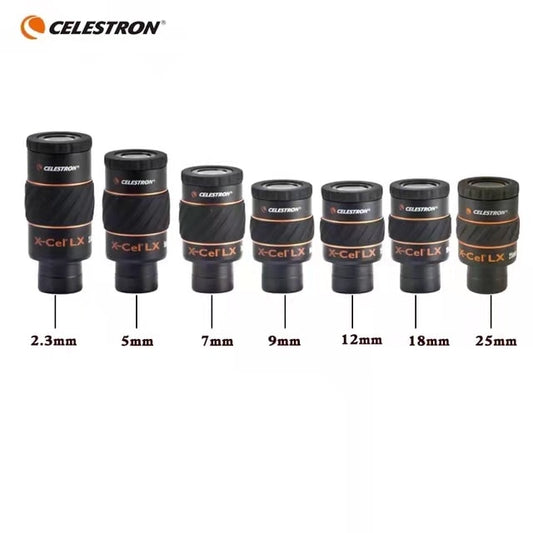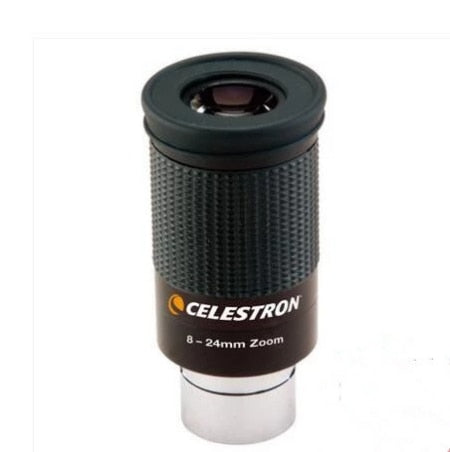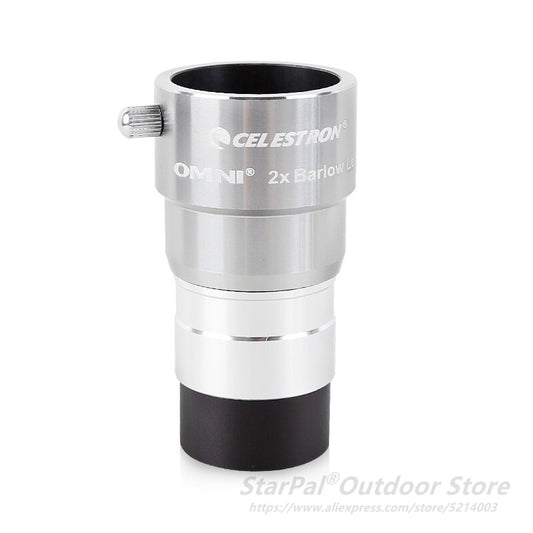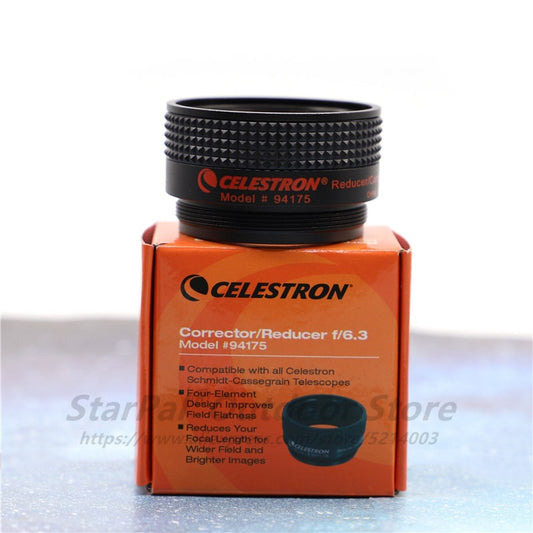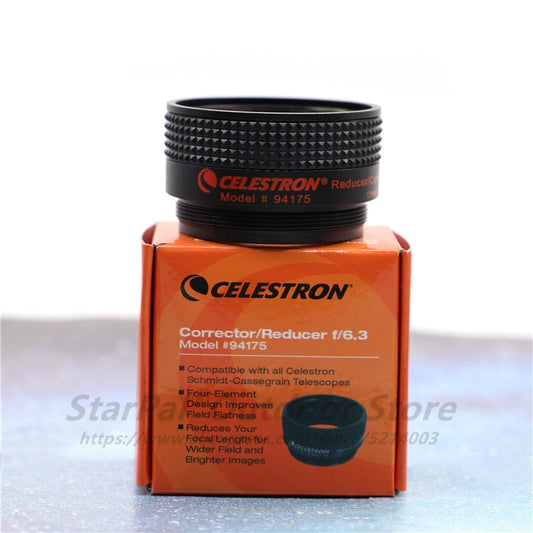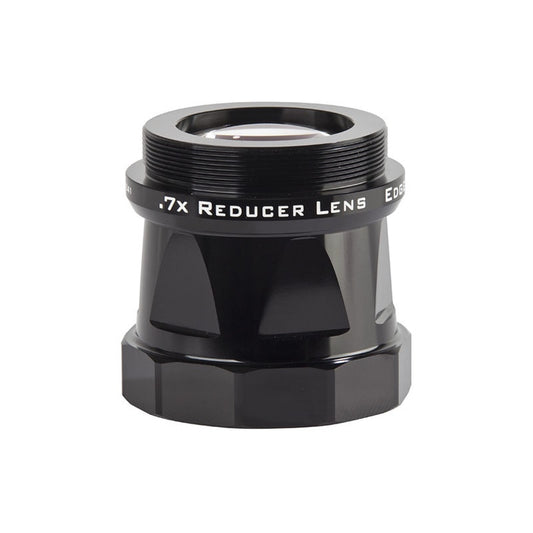If you're interested in astrophotography, you'll need a high-quality telescope to capture the beauty of the night sky. Celestron is a well-respected brand in the astronomy community and has produced some of the best telescopes for astrophotography. In this article, we'll go through the best Celestron telescopes for astrophotography.
Exploring the Universe with Celestron - The Best Telescopes for Astrophotography
When embarking on your astrophotography journey, a vital factor to consider is the quality and suitability of your telescope. Celestron telescopes are favored by many due to their excellent optics, durable build, and advanced features. Whether you're a novice or an experienced stargazer, Celestron offers a wide range of telescopes to cater to your astrophotography needs.
Celestron RASA 8
The Celestron RASA 8 features an 8-inch (200mm) aperture, 400mm focal length, and an impressive f/2.0 focal ratio. Weighing in at just 17lbs (7.7 kg), this telescope is designed specifically for astrophotography.
Pros
- Wide field of view great for large sky objects
- Fast focal ratio for reduced exposure times
- Lightweight and relatively portable
Cons
- Limited to wide-field imaging
- Needs a dedicated astro-camera
Celestron RASA 11
The Celestron RASA 11 boasts an 11-inch (280mm) aperture, 620mm focal length, and a speedy f/2.2 focal ratio. It weighs around 43lbs (19.5 kg), making it a heftier option.
Pros
- Exceptional image quality and light gathering capability
- Fast focal ratio for quick exposure times
- Good for wide field imaging
Cons
- Heavier and less portable than its RASA 8 counterpart
- Requires a dedicated astro-camera
Celestron C8
The Celestron C8 Schmidt-Cassegrain offers an 8-inch (203.2mm) aperture, 2032mm focal length, and an f/10 focal ratio. It weighs about 12.5lbs (5.67 kg) for the optical tube assembly.
Pros
- Compact and portable design
- High magnification potential
- Versatile for both planetary and deep-sky photography
Cons
- Slow focal ratio, requiring longer exposure times
- May require additional accessories for astrophotography
Celestron C6
The Celestron C6 has a 6-inch (150mm) aperture, 1500mm focal length, and an f/10 focal ratio. The optical tube assembly weighs around 10lbs (4.54 kg).
Pros
- Good choice for beginners
- Compact and lightweight
- Versatile for various types of astrophotography
Cons
- Smaller aperture gathers less light
- Slow focal ratio requires longer exposures
Celestron C8HD
Specifications and Description The Celestron C8HD is an 8-inch (203.2mm) EdgeHD Schmidt-Cassegrain telescope, featuring a 2032mm focal length and an f/10 focal ratio. The optical tube assembly weighs approximately 14lbs (6.35 kg).
Pros
- Delivers flat-field and aberration-free images
- Versatile for various types of astrophotography
- Suitable for both beginner and intermediate astrophotographers
Cons
- Heavier than the standard C8
- Requires additional accessories for optimized astrophotography
Celestron Advanced VX 6" Refractor
This telescope comes with a 150mm aperture and a 1200mm focal length. It is equipped with a parabolic primary mirror and a secondary mirror for excellent light gathering capability.
Pros
- Versatile, suitable for both planetary and deep-sky imaging
- Equipped with a computerized German equatorial mount
- StarBright XLT optical coatings for enhanced light gathering
Cons
- Requires a power supply for the mount
- Some users might find it heavy and not so portable
Celestron NexStar 6SE
The NexStar 6SE is a Schmidt-Cassegrain telescope with a 6-inch aperture and a 1500mm focal length. It boasts StarBright XLT high transmission coatings for enhanced image quality.
Pros
- Easy to set up and use, ideal for beginners
- Comes with a computerized GoTo mount for easy tracking of celestial objects
- Portable design
Cons
- Requires a power supply for the mount
- May need additional accessories for advanced astrophotography
Celestron NexStar 8SE
This is an 8-inch Schmidt-Cassegrain telescope, with a 2032mm focal length. It's a step up from the 6SE, offering a larger aperture for better light gathering ability.
Pros
- Large aperture for clear, bright images
- Comes with a computerized GoTo mount
- Good for both visual observing and astrophotography
Cons
- Heavy, less portable than the 6SE
- Requires a power supply for the mount
Celestron AstroMaster 130EQ
The AstroMaster 130EQ is a Newtonian reflector with a 130mm aperture and a 650mm focal length. It's a great choice for those starting out in astrophotography.
Pros
- Affordable and easy to use
- Good for moon and planetary photography
- Comes with an equatorial mount
Cons
- Not ideal for deep-sky imaging
- The mount may require frequent adjustments
Celestron CGX-L 1400 EdgeHD
The CGX-L 1400 is a high-end Schmidt-Cassegrain telescope with a massive 14-inch aperture and a 3910mm focal length. It's designed for serious enthusiasts and professional astrophotographers.
Pros
- Large aperture for exceptional light gathering
- Advanced computerized GoTo mount
- EdgeHD optics for superb image quality
Cons
- Very heavy and less portable
- Requires a dedicated power supply
Celestron NexStar 130SLT
This is a 130mm aperture Newtonian reflector with a 650mm focal length. It features a computerized mount which makes locating celestial objects a breeze.
Pros
- Computerized mount for easy tracking
- Good for lunar and planetary imaging
- Fairly portable design
Cons
- Not ideal for deep-sky astrophotography
- Requires a power supply for the mount
Celestron CPC Deluxe 1100 HD
The CPC Deluxe 1100 HD is an 11-inch Schmidt-Cassegrain telescope with a 2800mm focal length. It features EdgeHD optics and a dual fork arm mount.
Pros
- Large aperture for bright, detailed images
- Durable and stable mount
- Excellent for deep-sky astrophotography
Cons
- Heavy and not very portable
- Requires a power supply for tracking
Celestron Advanced VX 8" Newtonian
The Advanced VX 8" Newtonian offers a large 200mm aperture and a 1000mm focal length. It is a great choice for intermediate astrophotographers interested in deep-sky photography.
Pros
- Large aperture for capturing detailed images
- Equipped with a computerized German equatorial mount
- Suitable for deep-sky astrophotography
Cons
- Heavier and less portable than smaller models
- Requires a power supply for the mount
Selecting the Best - Why Celestron RASA 8 is the Perfect Astrophotography Telescope
When it comes to astrophotography, the Celestron RASA 8 stands out for numerous reasons. One standout feature is its impressive lens speed. With an ultra-fast f/2 focal ratio, the RASA 8 is optimized for astrophotography like few other telescopes on the market.
This astrophotography marvel weighs just 17lbs (7.7 kg) and is equipped with an 8-inch (200mm) aperture, 400mm focal length, and a stunningly fast f/2 focal ratio.
The key to the RASA 8's exceptional performance in astrophotography lies in its impressive lens speed. The fast lens speed means that significantly more light reaches the sensor in a shorter amount of time compared to slower telescopes. To put this into perspective, an f/2 telescope like the RASA 8 gathers four times more light than an f/4 telescope, and a whopping 25 times more than an f/10. This allows for shorter exposure times, meaning you can capture detailed, high-quality astrophotographs in a fraction of the time it would take with a slower telescope.
However, operating the RASA 8 does require some special equipment. Given the fast optical system, the telescope requires fast filters to adequately control the light entering the sensor. Despite the need for extra equipment, these filters allow for better color fidelity and improved detail capture, making the investment well worth it.
One of the significant benefits of the RASA 8 is its wide field of view, making it excellent for capturing expansive celestial objects such as nebulae and galaxies. It's also relatively lightweight and portable, making it a great option if you need to travel to escape light pollution.
The Affordable Alternative - Celestron C8-A-XLT
If the RASA 8 is out of your budget, don't worry. The Celestron C8-A-XLT OTA is an excellent, more affordable alternative. Weighing in at around 12.5lbs (5.67 kg), it boasts an 8-inch (203.2mm) aperture, 2032mm focal length, and an f/10 focal ratio. It has a slower lens with an f/10 focal ratio, but with the addition of a Celestron focal reducer, you can speed this up to f/6.3.
One of the C8-A-XLT's highlights is its versatility. It comes with a slower f/10 lens, but when coupled with a Celestron focal reducer, it reaches a faster f/6.3. To understand the advantage, an f/6.3 focal ratio gathers roughly 2.5 times more light than an f/10, reducing the exposure times and offering a broader field of view.
The Celestron C8-A-XLT OTA telescope has an original focal length of 2032mm. When paired with a Celestron focal reducer, this focal length is typically reduced by about 37%, bringing it down to approximately 1270mm. This makes the telescope more suitable for capturing wider field images and reduces exposure times, which is particularly beneficial for astrophotography. Keep in mind that these are approximate figures, and the actual performance can vary based on several factors, including the specific model of focal reducer used and the distance from the camera sensor.
The Celestron C8-A-XLT OTA is a versatile telescope suitable for various types of astrophotography. Its 8-inch aperture provides excellent light-gathering capability, and its compact size makes it relatively portable. Furthermore, its compatibility with a variety of accessories means you can continually upgrade and improve your setup as your skills and interest grow.
Conclusion
When choosing a telescope for astrophotography, it's essential to consider your specific requirements, budget, and skill level. The Celestron RASA 8 is an outstanding choice for those serious about astrophotography and willing to invest in special equipment to unlock its full potential. On the other hand, the Celestron C8-A-XLT OTA offers great versatility and upgrade potential at a more affordable price point. Whatever your choice, Celestron has the equipment to take you on an unforgettable journey through the cosmos.
More Celestron Topics:
- How to use a Celestron telescope for Beginners
- Best Celestron Refractor Telescope
- Celestron Astromaster 130EQ Review
- Celestron PowerSeeker 127EQ Telescope Review
- Celestron Travel Scope 70 Review
- Celestron Astromaster 70AZ Telescope Review
- Celestron NexStar 8SE Computerised Telescope Review




